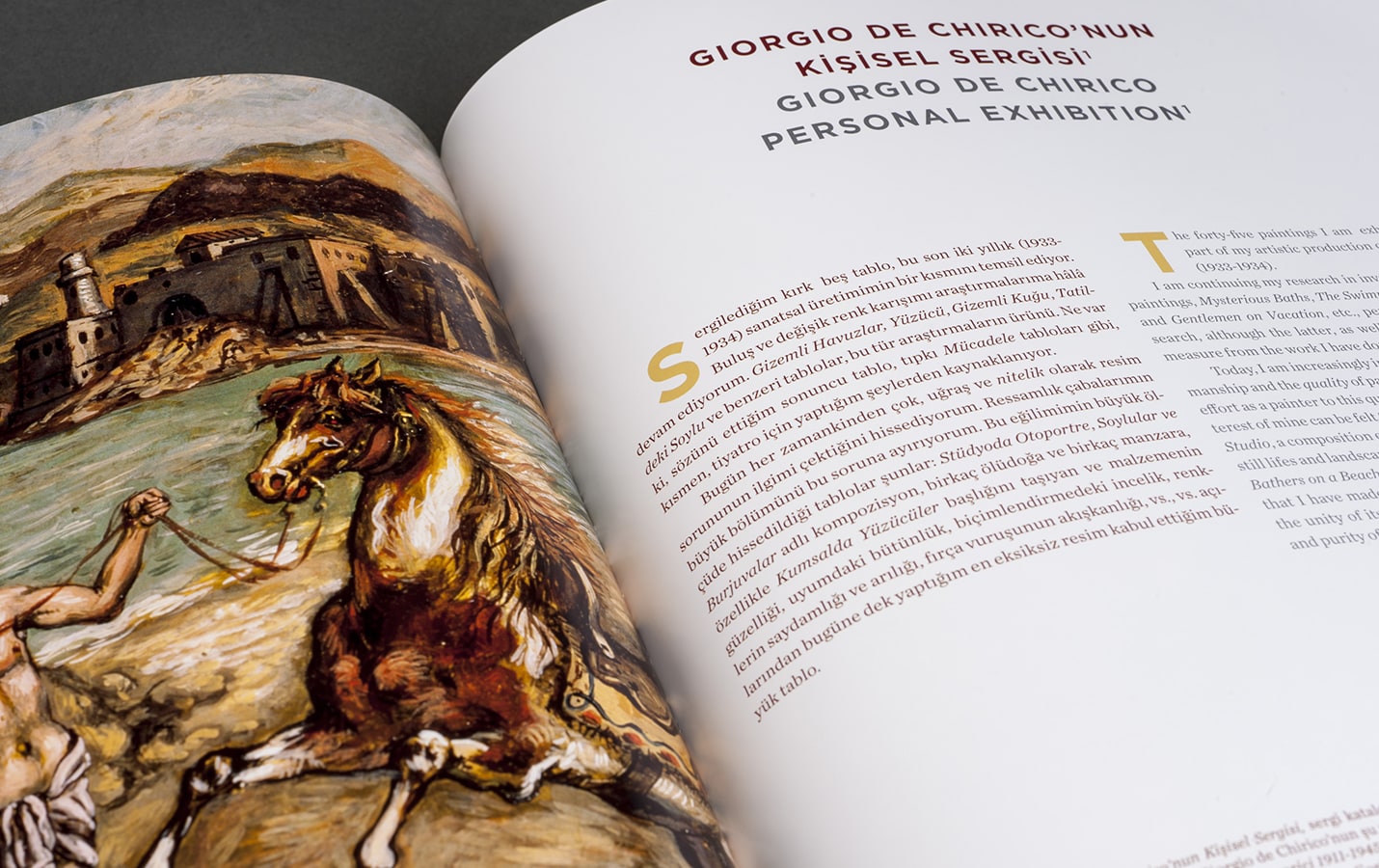February 24 - May 8, 2016
Pera Museum proudly presented an exhibition of Giorgio de Chirico, a pioneer of the metaphysical art movement and one of the most extraordinary artists of the 20th century.
Brought to life in collaboration with the Fondazione Giorgio e Isa de Chirico in Rome, the exhibition comprised a broad selection of 70 paintings, 2 lithography series, and 10 sculptures. During the years he studied at the Munich Academy of Fine arts between 1906 and 1909, de Chirico was influenced by the works of philosophers such as Nietzsche, Schopenhauer, and Otto Weininger, as well as the art of Arnold Böcklin and Max Klinger. With his writings and works on the “metaphysical,” de Chirico was also a source of inspiration for the Surrealists. The exhibition, which also included one of the earliest works (1909) by the artist, encompassed a large selection of works extending particularly from the 1920s until his last years to mid-1970s. Born in Greece as the son of Italian parents, de Chirico (1888-1978) visited İstanbul, the birthplace of his father Evaristo de Chirico, with his works.
in collaboration

contribution by


Exhibition Catalogue

In 2016, Pera Museum presented an extensive content with approximately 70 paintings, 2 lithography series and 10 sculptures of Giorgio de Chirico, the founder of metaphysical art, with the...
Video
The program explores the relationship between the cinematic and the philosophical, the fundamental nature of being and the world that encompasses it. The selected films bring together unusual stories exploring the nature of dreams, consciousness, existentialism, free will, our relations with others, and mainly the meaning of life.

A firm believer in the idea that a collection needs to be upheld at least by four generations and comparing this continuity to a relay race, Nahit Kabakcı began creating the Huma Kabakcı Collection from the 1980s onwards. Today, the collection can be considered one of the most important and outstanding examples among the rare, consciously created, and long-lasting ones of its kind in Turkey.
Tuesday - Saturday 10:00 - 19:00
Friday 10:00 - 22:00
Sunday 12:00 - 18:00
The museum is closed on Mondays.
On Wednesdays, the students can
visit the museum free of admission.
Full ticket: 300 TL
Discounted: 150 TL
Groups: 200 TL (minimum 10 people)